The Spencer Company's Football Posters of 1941
I have a soft spot for football artwork, with the softest spot reserved for the illustrations of 1900 to 1960, when printing technologies could handle multiple colors on the page but could not print color photographs economically. Early examples of this artwork appeared on the section divider pages of college yearbooks, some of which appeared in an earlier article, College Yearbook Football Art. College yearbooks were printed with the anticipation that they would be keepsakes, resulting in student artists spending the time and editors spending the money to include a few color pages in each volume.
The program covers for football games also featured artwork, but creating and printing fancy covers was too expensive for most schools since the programs were often tossed aside after the games. most schools. At least, that was the case until Don Spencer came along. As I described in Lon Keller and the Art of Football, Spencer worked for a company that created and printed custom covers until he:
…left the company with an idea for a different business model. Rather than print custom covers for a few schools, Spencer's idea was to have top artists produce high-quality designs with open spaces so game-specific information could be placed on the cover via a second printing. Doing so increased the cover quality while dramatically reducing costs, making Spencer's covers attractive to large and small colleges, with local vendors adding game-specific information and marrying the covers with the local contents.
Spencer’s business took off when Coca-Cola began sponsoring his covers for high schools nationwide. Besides being economical, the covers featured great illustrations, including many by Lon Keller, who some called the "Norman Rockwell of College Football."
Spencer’s model worked well for game programs, and they applied the same model to the posters schools used to promote athletic events. The company created attention-grabbing and quality posters with open spaces allowing local printers to add information about game dates, opponents, kickoff times, and more. The posters came in several sizes to fit at the campus bookstores, storefront windows, countertops, or anywhere else that made sense.
As they did for the program covers, Spencer sent poster catalogs to athletic departments nationwide, offering wares that could be ordered by mail. The cover of Spencer’s 1941 catalog is shown below.
It must have been a banner year for Spencer’s finances since a letter accompanying the catalog noted that America's increased defense spending meant that people across the economy would have money to spend on football or other game tickets. Without a doubt, it was a banner year for the posters shown. (-Click the images to enlarge-)
Since the posters do not need much commentary, I will not offer any other than to say each is a beautiful period image portraying an idealized sports world in 1941. They are so nice they will soon adorn my office walls. A similar Spencer Company catalog of program covers will arrive at Football Archaeology headquarters shortly, so expect a similarly themed article or two soon.
Football Archaeology is reader-supported. Click here to buy one of my books or otherwise support the site.


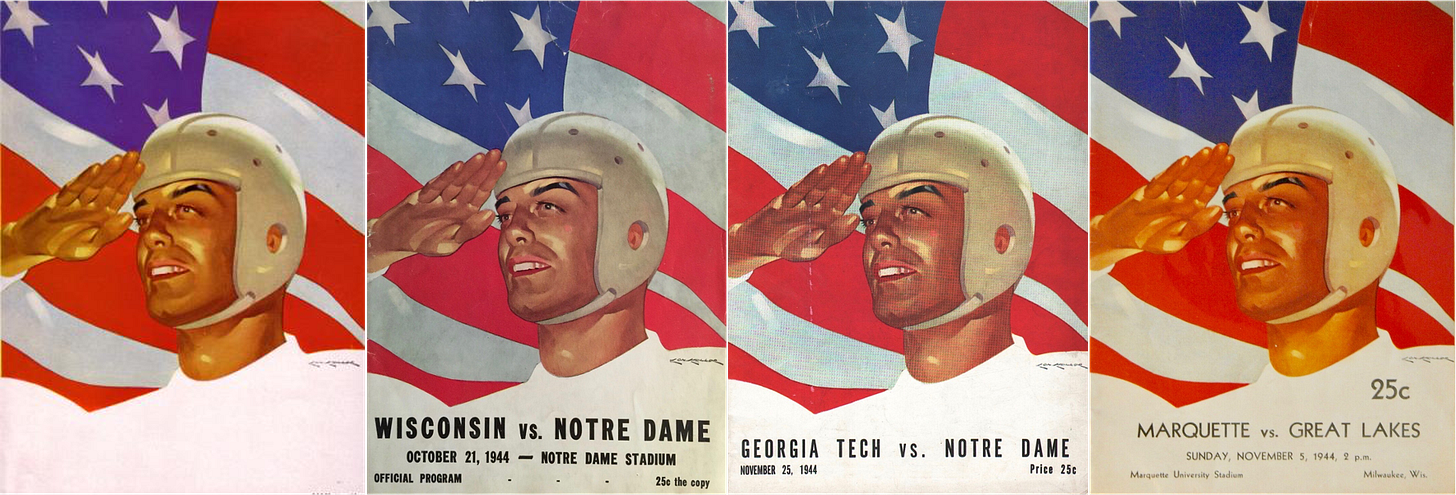

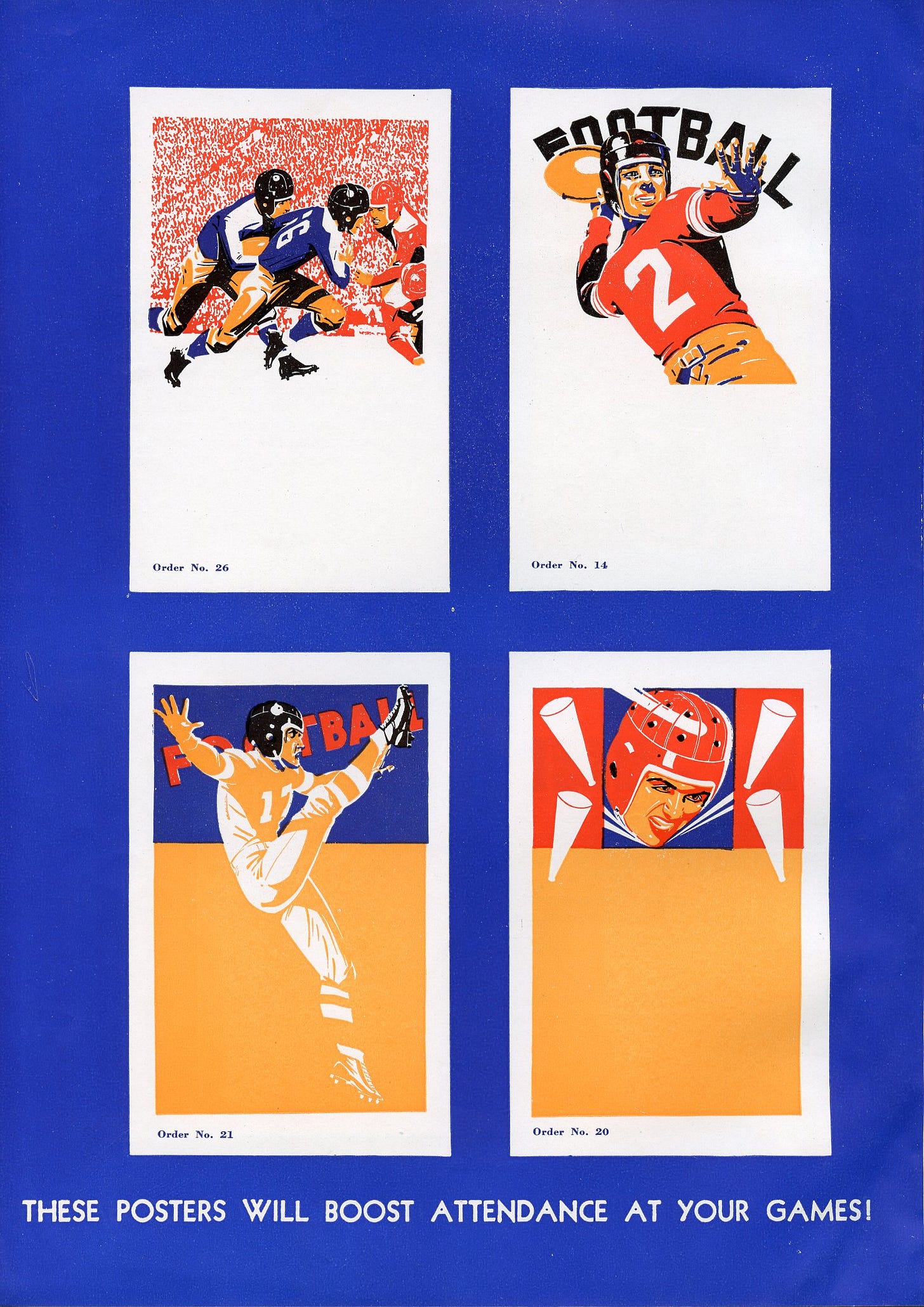
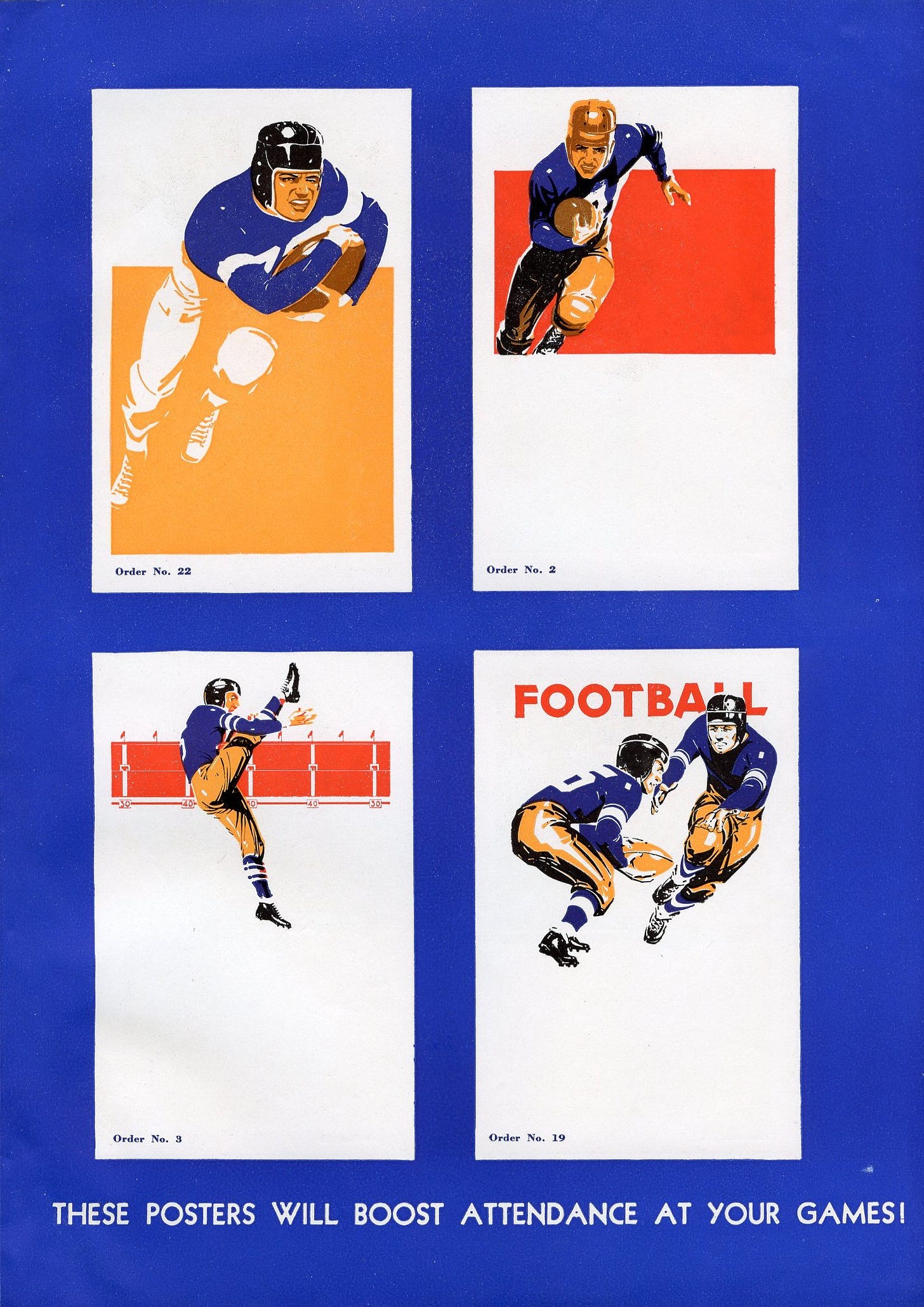
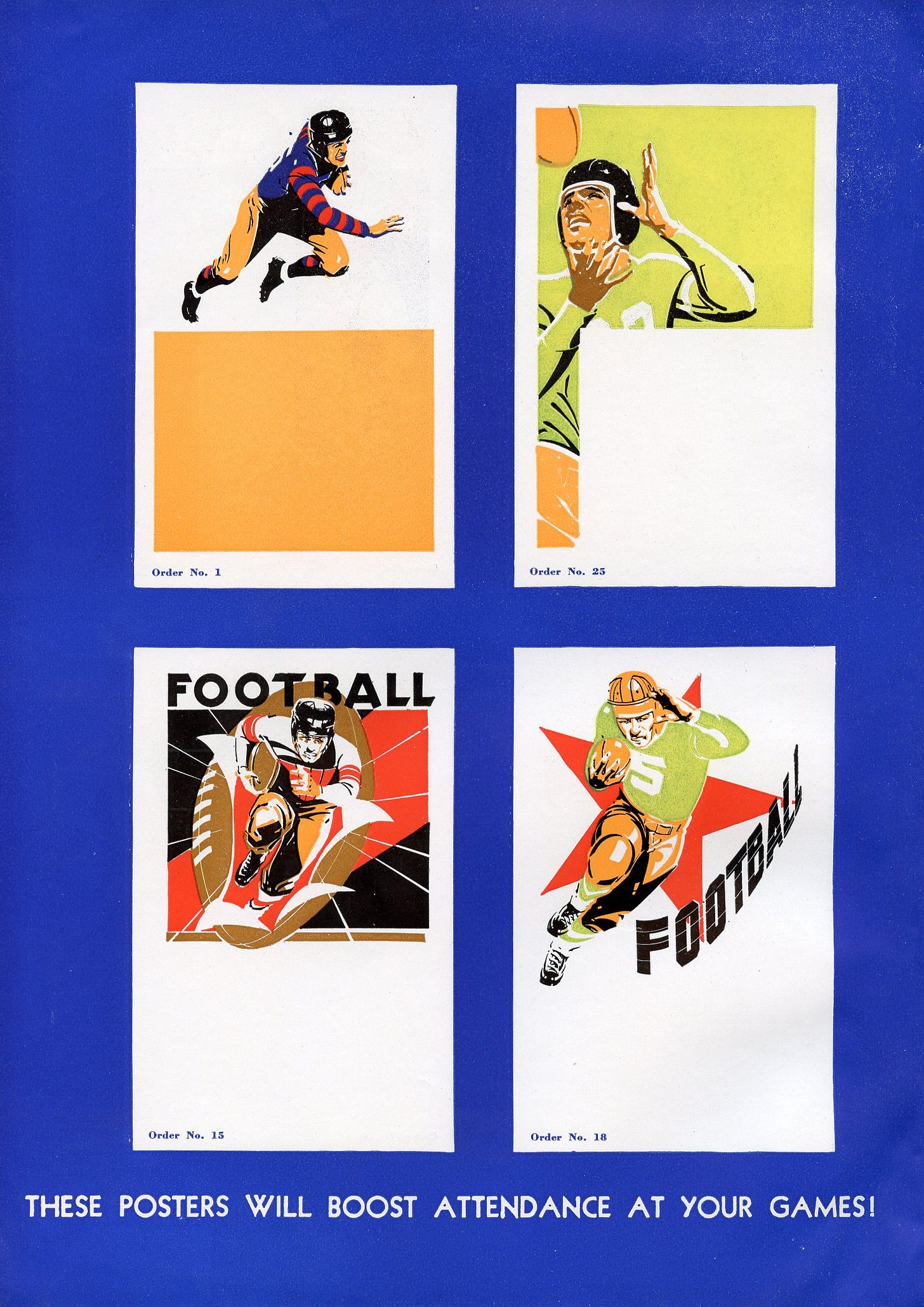
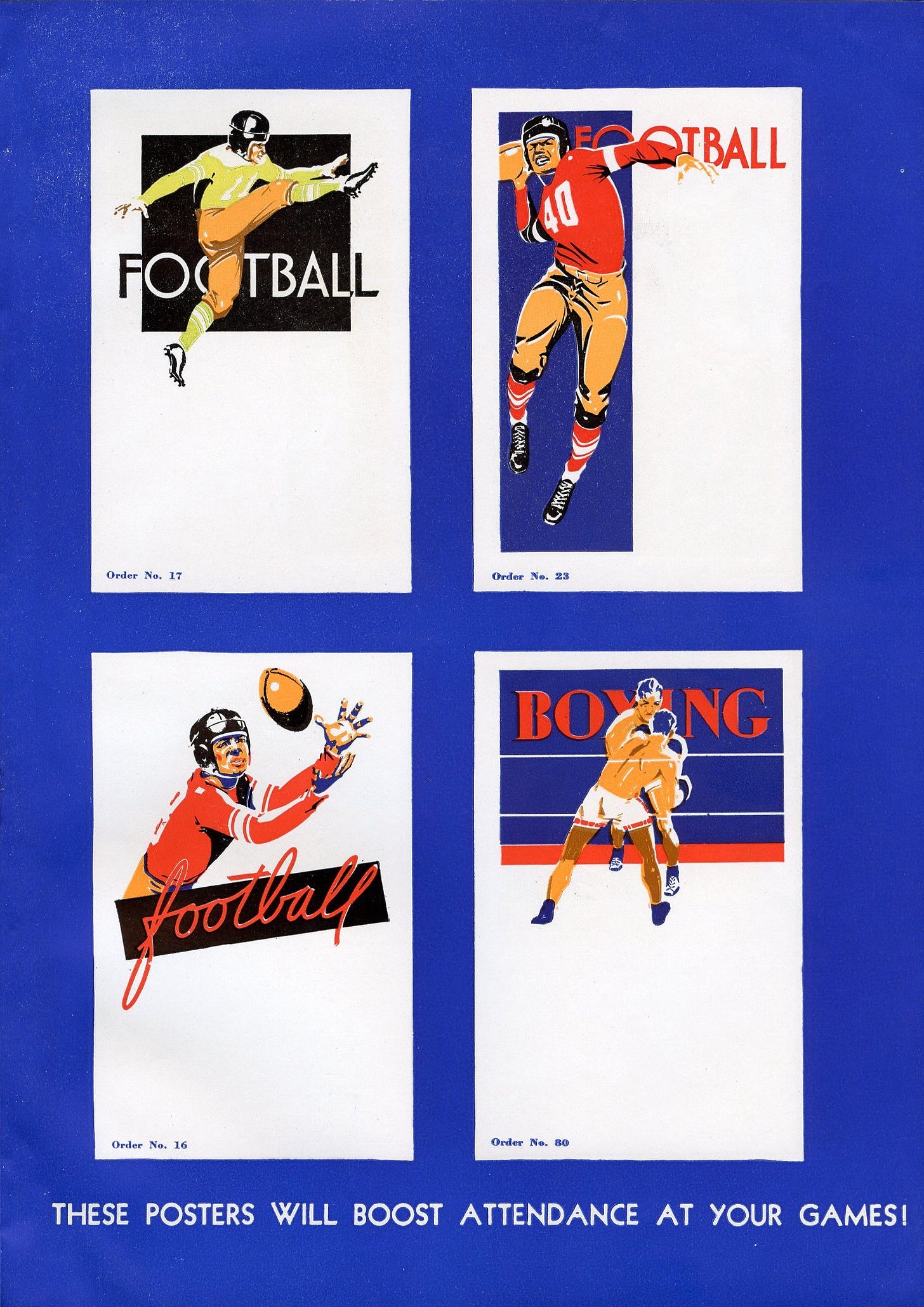
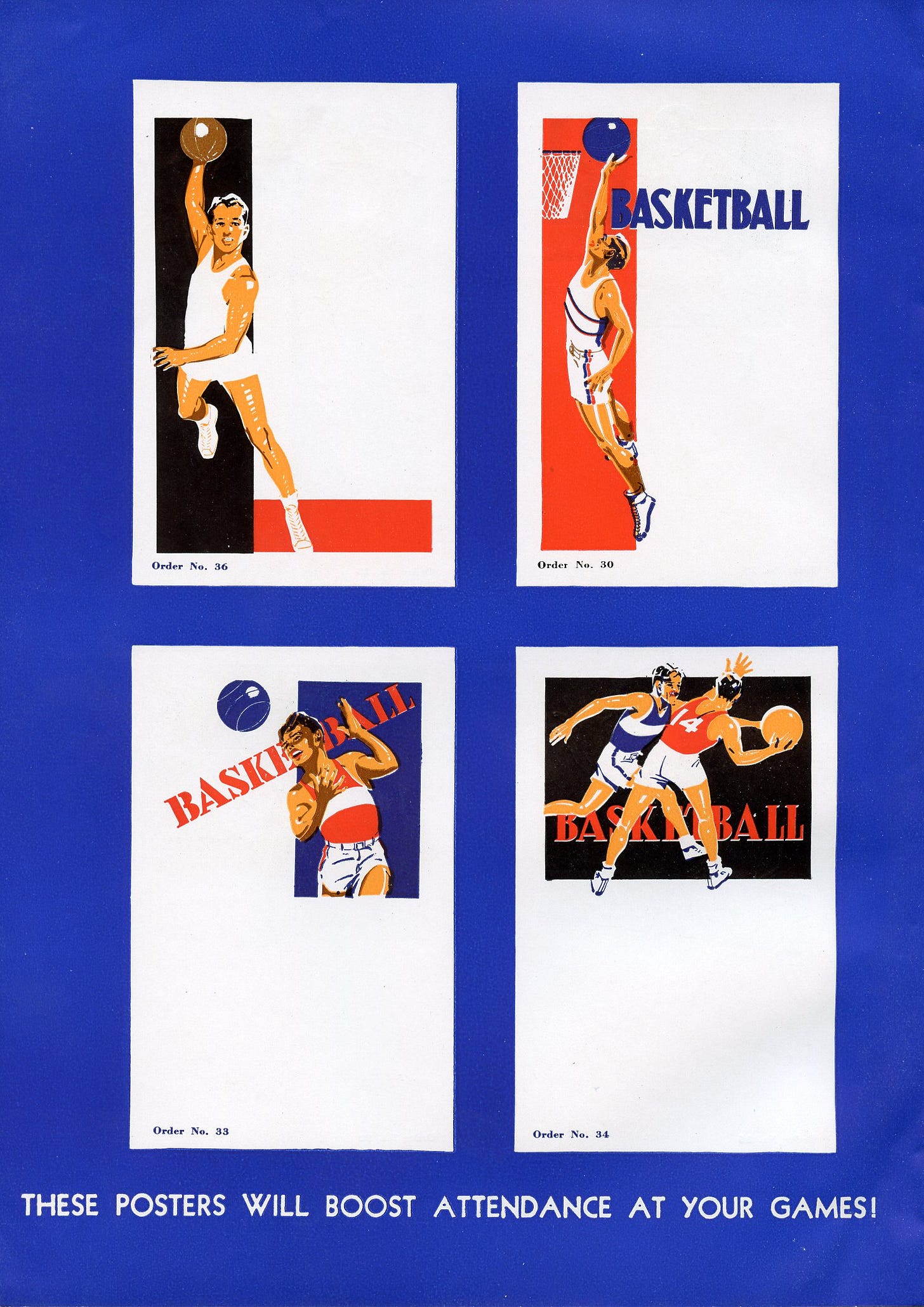
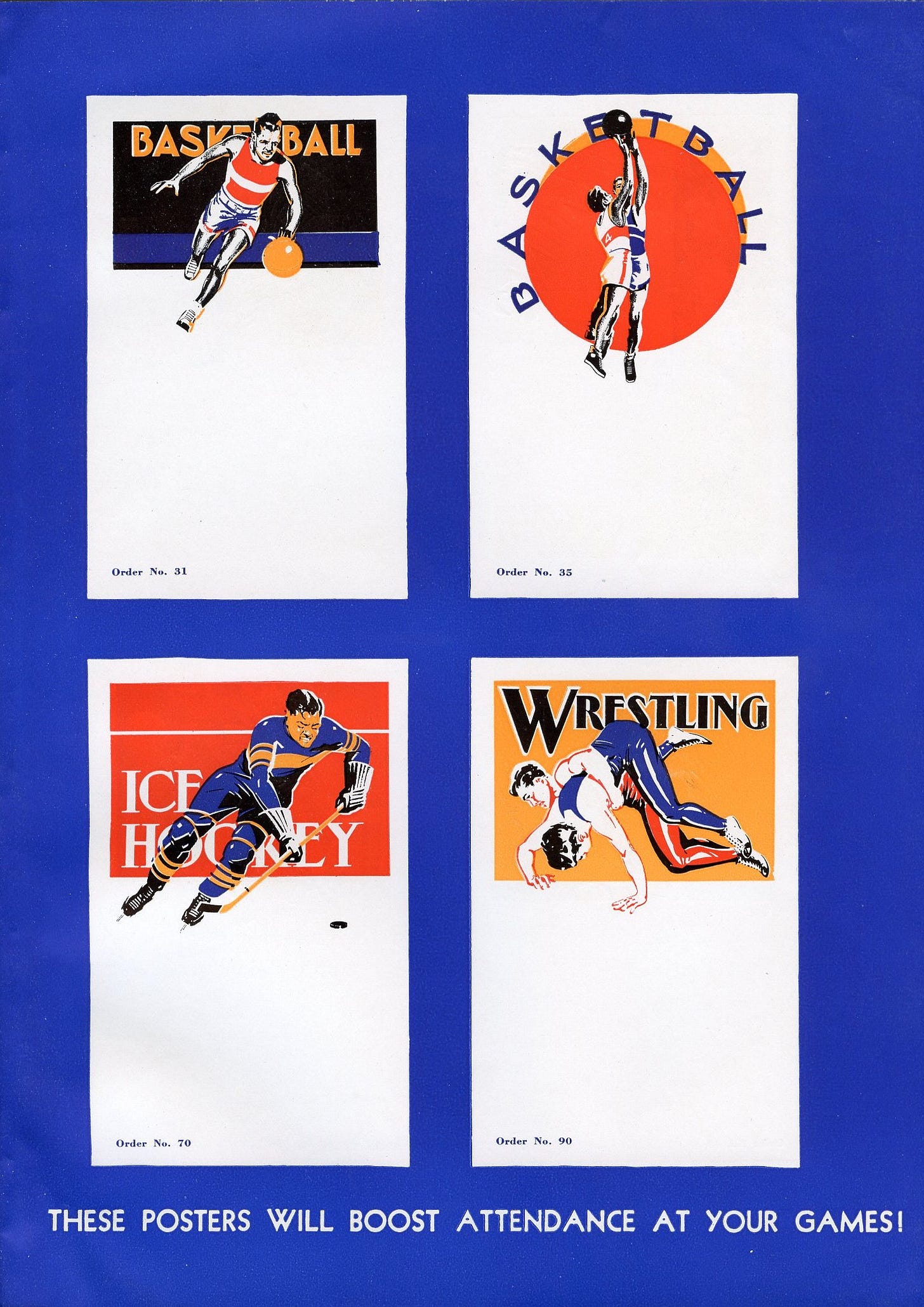
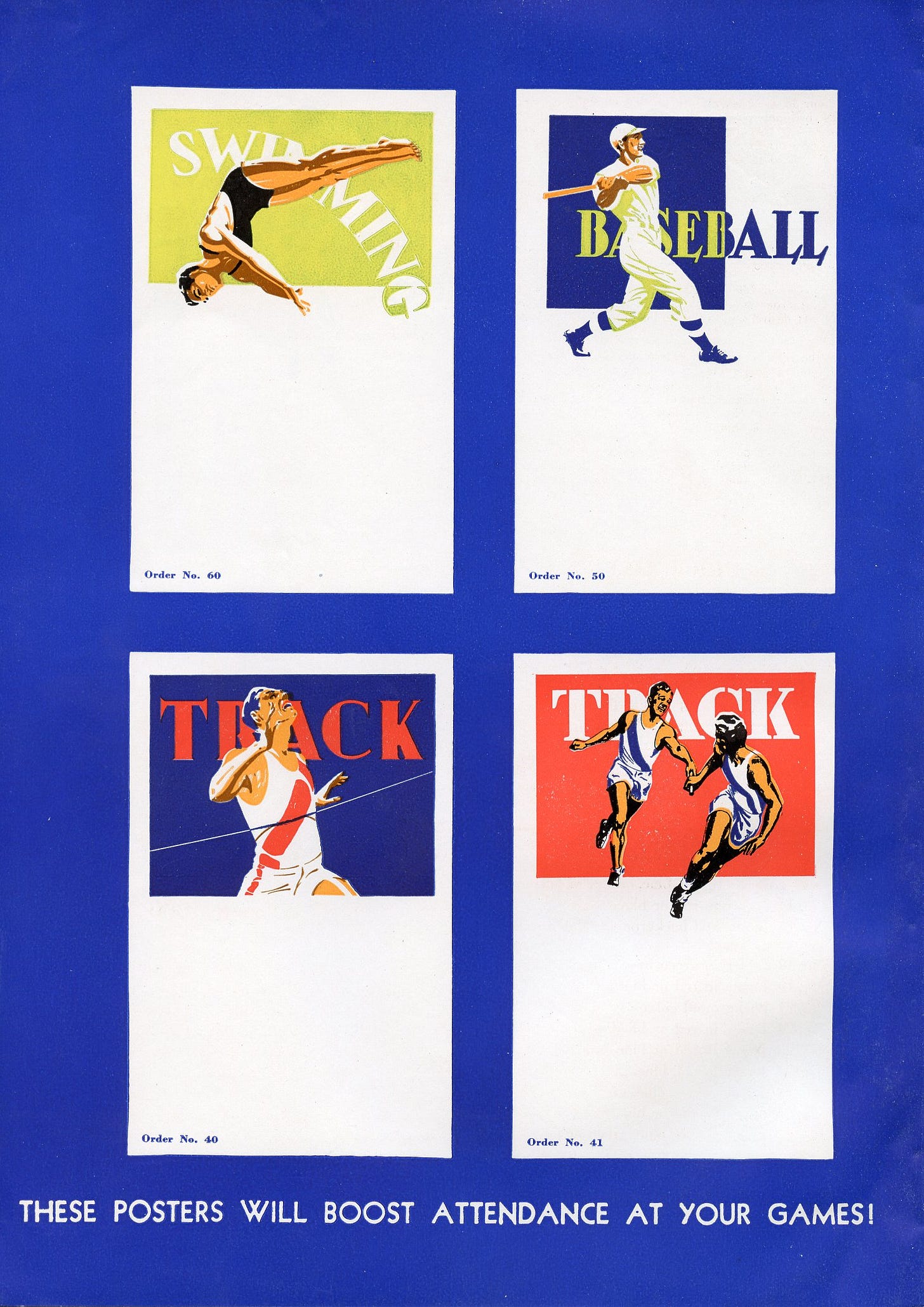
Great stuff. Love the old game program artwork!